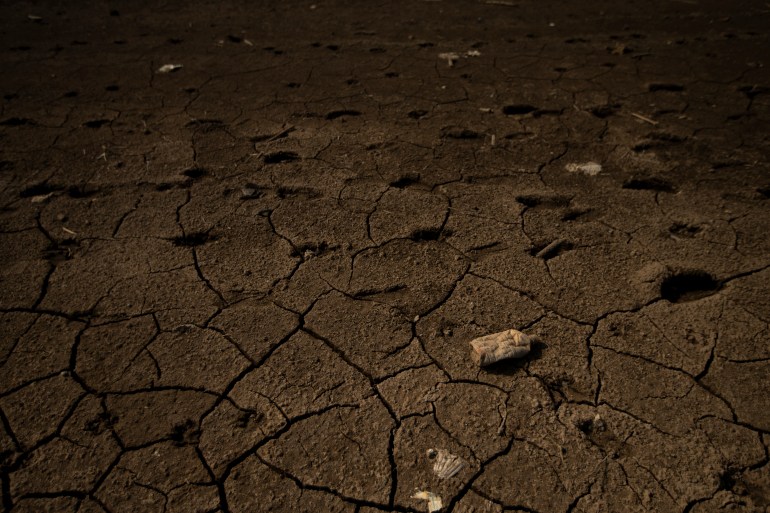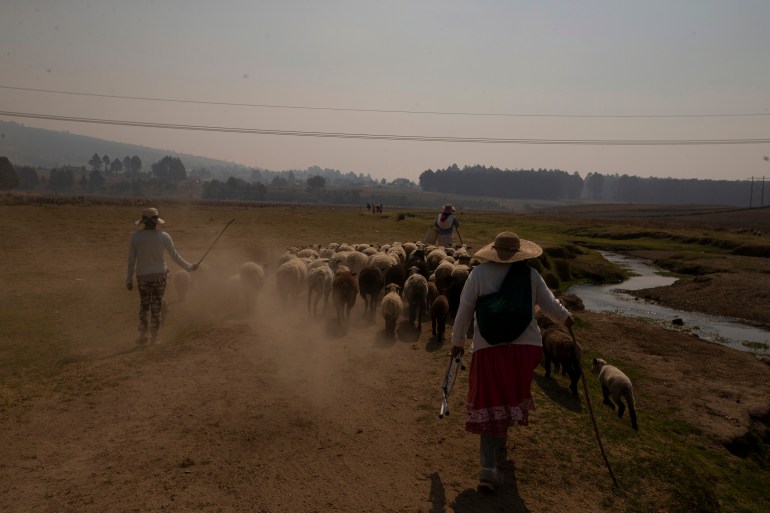Drought in Mexico reaches critical levels as lakes dry up
Authorities fear that once-thriving bodies of water that served surrounding communities may turn into dusty plains.

Drought conditions now cover 85 percent of Mexico, and residents of the nation’s central region said Thursday that lakes and reservoirs are simply drying up, including the country’s second-largest body of freshwater.
The mayor of Mexico City said the drought was the worst in 30 years, and the problem can be seen at the reservoirs that store water from other states to supply the capital.
Keep reading
list of 3 itemsMexico’s health workers slam president for withholding vaccine
US vice president to visit Mexico, Guatemala for migration talks
Some of them, like the Villa Victoria reservoir west of the capital, are at one-third of their normal capacity, with a month and a half to go before any significant rain is expected.

Isais Salgado, 60, was trying to fill his water tank truck at Villa Victoria, a task that normally takes him just half an hour. On Thursday, he estimated it was taking three and a half hours to pump water into his 10,000-litre (2,641-gallon) tanker.
“The reservoir is drying up,” said Salgado. “If they keep pumping water out, by May it will be completely dry, and the fish will die.”
Mexico City Mayor Claudia Sheinbaum said that as the drought worsened, more people have tended to water their lawns and gardens, which exacerbates the problem.
The capital’s nine million inhabitants rely on reservoirs like Villa Victoria and two others – which together are at about 44 percent capacity – for a quarter of their water. Most of the rest comes from wells within city limits. But the city’s own water table is dropping and leaky pipes waste much of what is brought into the c0ity.
Rogelio Angeles Hernandez, 61, has been fishing the waters of Villa Victoria for the last 30 years. He is not so much worried about his own catch, in dry seasons of the past, residents were able to cart fish off in wheelbarrows as water levels receded.
But tourism at reservoirs, like Valle de Bravo further to the west, has been hit by falling water levels.

In the end, it is the capital that is really going to suffer.
“Fishing is the same, but the real impact will be on the people in Mexico City, who are going to get less water,” Angeles Hernandez said.
Further to the west, in Michoacan state, the country is at risk of losing its second-largest lake, Lake Cuitzeo, where about 70 percent of the lake bed is now dry. The main culprit is drought, but residents say that roads built across the shallow lake and diversion of water for human use have also played a role.
Michoacan Governor Silvano Aureoles said so much of the lake has dried up that shoreline communities now suffer dust storms. He said communities might have to start planting vegetation on the lake bed to prevent them.
In a petition to the government, residents of communities around the lake said only six of 19 fish species once present in Cuitzeo now remain. They said the dust storms had caused tens of thousands of respiratory and intestinal infections among local residents.